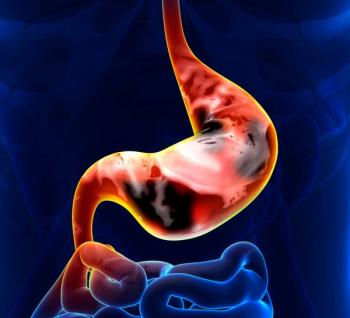
Oncology NEWS International
- Oncology NEWS International Vol 9 No 10
- Volume 9
- Issue 10
Anal Cancer Incidence Rising in Homosexual Men
BOSTON-Benign anorectal disease should be treated as a possible marker for precancerous anal lesions in men who have sex with men, Stephen E. Goldstone, MD, said at the American Society of Colon and Rectal Surgeons annual meeting.
BOSTONBenign anorectal disease should be treated as a possible marker for precancerous anal lesions in men who have sex with men, Stephen E. Goldstone, MD, said at the American Society of Colon and Rectal Surgeons annual meeting.
More than 60% of 200 such men referred to his practice with presumed benign anorectal conditions were found to have high-grade squamous intraepithelial lesions (HSIL) or squamous carcinoma, he said. He recommends aggressive screening of all men who have sex with men referred for treatment of condyloma, hemorrhoids, and other benign anal disorders.
We must start taking anal warts seriously in men who have sex with men. Anal warts should be viewed as a marker for a potentially precancerous anal lesion, Dr. Goldstone told ONI. Treating anal warts alone is not enough. You may miss the more serious precancerous dysplasia inside the anal rectal canal.
Dr. Goldstone, assistant clinical professor, Mount Sinai School of Medicine, New York, and medical director of gayhealth.com, said that he sees many gay men in his general surgery practice. The appearance of anal cancer in this population is a recent but growing phenomenon, Dr. Goldstone said. He speculates that the disease is emerging now because it develops slowly and HIV-positive people are living longer as a result of new therapies.
Until recently, he saw almost no cases of anal cancer, he said. He described the disease as extremely rare and more likely to be found in elderly women. From 1997 to 1999, I saw five cases. Before 97, I saw one in my whole career, he said.
Alarmed by the pathology reports he was seeing for gay men, he asked Joel M. Palefsky, MD, of the Department of Laboratory Medicine, University of California, San Francisco, to help design a study.
From 1997 to 1999, I collected 200 patients who were referred to my practice for anal warts, hemorrhoids, fissures, anal itchproblems you would never associate with precancerous conditions, Dr. Goldstone said.
The majority157 patients (79%)came with a referral diagnosis of condyloma. Four (2%) had anal squamous intraepithelial lesions (ASIL), and 39 (19%) presented with other benign anorectal disorders. The patients ranged from 22 to 59 years of age; 131 (66%) were HIV positive. Standard Pap methods were used to report anal cytology according to a modified Bethesda classification. Biopsy specimens were obtained for everyone in the study.
Cytology showed that 105 patients (53%) had HSIL; only 14 (7%) had benign anal cytology. The biopsy results were even more striking: 120 patients (60%) had HSIL and 5 (3%) showed invasive squamous carcinoma. Only 11 patients (6%) had benign pathology.
Although prevalence of HSIL and squamous carcinoma was high for both HIV-positive and HIV-negative men, the positive group was more likely to have HSIL or squamous carcinoma. Prevalence of these conditions was 71% in HIV-positive men vs 46% in HIV-negative men. Four of the five patients with invasive squamous carcinoma were HIV positive.
Men without gross evidence of condyloma had a lower incidence (44%) of HSIL or squamous carcinoma, but it was still high, he noted.
Dr. Goldstone stressed that cytology by itself should only be considered a guide. On the one hand, it underpredicted the disease. On the other hand, any abnormality that was found correlated with a high incidence (64%) of biopsy-proven HSIL or squamous carcinoma. Cytology is, at best, a predictor of abnormal cells, he said.
Articles in this issue
about 25 years ago
HER-2/neu Activation May Predict Breast Cancer Prognosisabout 25 years ago
Company Offers Computer-Aided Detection of Breast Cancerabout 25 years ago
ASBD, an Interdisciplinary Group, Fights Breast Cancerabout 25 years ago
How Employers Can Help Caregivers in the Workplaceabout 25 years ago
Only Slight Improvement in Hepatocellular Carcinoma Survivalabout 25 years ago
New BRCA1 Mutations Found in Black and Hispanic Womenabout 25 years ago
Study Shows Profile of At-Risk Elderly Lung Cancer Patientsabout 25 years ago
Scientific Studies Support Strategies to Curb Nicotine Addictionabout 25 years ago
Smoking Declines Among High School Males, But Not FemalesNewsletter
Stay up to date on recent advances in the multidisciplinary approach to cancer.
















































































